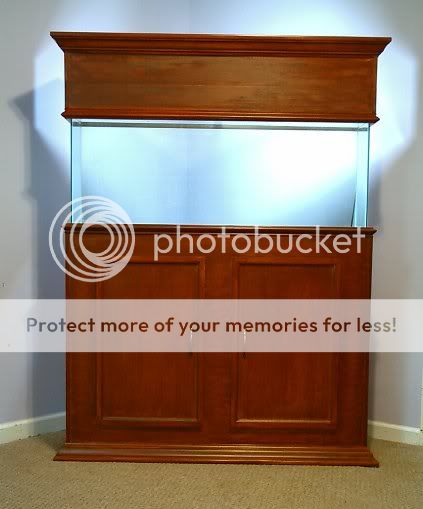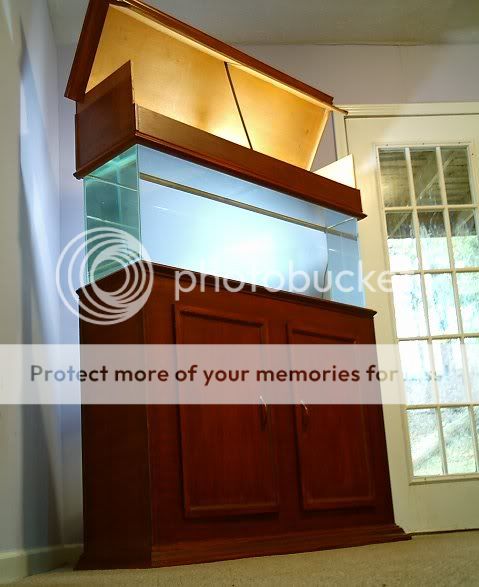countertopguy
New member
It seems that there is always a thread on here where somebody is asking about stand plans. It is very difficult to create a ââ"šÂ¬Ã…"œcookie cutterââ"šÂ¬Ã‚ plan that will satisfy all needs and tank sizes. I have attempted to put together a step-by-step guide that can be adapted for use with other size tanks as well as be ââ"šÂ¬Ã…"œdressed upââ"šÂ¬Ã‚ with molding or other details.
I have tried to use a design that is relatively simple, requires few tools, uses no 2x4ââ"šÂ¬Ã¢"žÂ¢s and is strong. Like reefkeeping there are many ways to build a stand. Please share if you have suggestions or plans of your own.
Obligitory Disclaimer- I am not a professional woodworker. I have built cabinets, aquarium stands and furniture but I am not an engineer. Use the following information at your own RISK. And donââ"šÂ¬Ã¢"žÂ¢t forget your safety glasses!
Letââ"šÂ¬Ã¢"žÂ¢s get to it!
I sized this for a 90 gal AGA tank (48.5ââ"šÂ¬Ã‚ x 18.5ââ"šÂ¬Ã‚ including the trim). It can be adapted to fit any size tank. I made it 39ââ"šÂ¬Ã‚ tall but again you can modify that to fit your needs. It is made entirely of plywood and hardwood. I will include a cut list and a cutting diagram later.
Tools needed include drill, miter saw and table saw. If you donââ"šÂ¬Ã¢"žÂ¢t have a table saw a circular saw will do but you will need to use a clamped straight edge to make sure your cuts are straight. I also highly recommend investing in a Kreg pocket screw jig, You can get them at Lowes for about $20.
First step is to cut out the back and side panels

These are Ã"šÃ‚¾Ã¢â"šÂ¬Ã‚ plywood.
Next, cut out the internal supports.

These are Ã"šÃ‚¾Ã¢â"šÂ¬Ã‚ plywood cut into 2ââ"šÂ¬Ã‚ rips. It is important that these be straight and square. Pre-drill these with pocket screws to make the assembly easier.
These will carry the load of the aquarium.
Attach the internal supports to the back and side panels


Note the spacing. This may vary depending on the thickness of the plywood you use. Attach the internal supports with glue and screws.
I have tried to use a design that is relatively simple, requires few tools, uses no 2x4ââ"šÂ¬Ã¢"žÂ¢s and is strong. Like reefkeeping there are many ways to build a stand. Please share if you have suggestions or plans of your own.
Obligitory Disclaimer- I am not a professional woodworker. I have built cabinets, aquarium stands and furniture but I am not an engineer. Use the following information at your own RISK. And donââ"šÂ¬Ã¢"žÂ¢t forget your safety glasses!
Letââ"šÂ¬Ã¢"žÂ¢s get to it!
I sized this for a 90 gal AGA tank (48.5ââ"šÂ¬Ã‚ x 18.5ââ"šÂ¬Ã‚ including the trim). It can be adapted to fit any size tank. I made it 39ââ"šÂ¬Ã‚ tall but again you can modify that to fit your needs. It is made entirely of plywood and hardwood. I will include a cut list and a cutting diagram later.
Tools needed include drill, miter saw and table saw. If you donââ"šÂ¬Ã¢"žÂ¢t have a table saw a circular saw will do but you will need to use a clamped straight edge to make sure your cuts are straight. I also highly recommend investing in a Kreg pocket screw jig, You can get them at Lowes for about $20.
First step is to cut out the back and side panels

These are Ã"šÃ‚¾Ã¢â"šÂ¬Ã‚ plywood.
Next, cut out the internal supports.

These are Ã"šÃ‚¾Ã¢â"šÂ¬Ã‚ plywood cut into 2ââ"šÂ¬Ã‚ rips. It is important that these be straight and square. Pre-drill these with pocket screws to make the assembly easier.
These will carry the load of the aquarium.
Attach the internal supports to the back and side panels


Note the spacing. This may vary depending on the thickness of the plywood you use. Attach the internal supports with glue and screws.

































